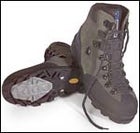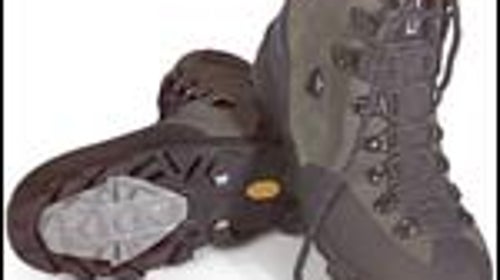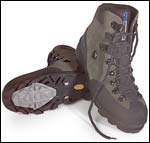Once upon a time, what you’re after was simply called a “boot.” They were what you put on when you went hiking—didn’t matter if it was a day hike up Mount Si or a crack at the Ptarmigan Traverse. Now we have day hikers and trail runners and light backpacking boots and heavy backpacking boots and light mountaineering boots and…well, you get the picture.
 Montrail Olympus
Montrail Olympus
Anyway, the prototypical boot for your needs is the Montrail Olympus ($235, www.montrail.com), which is an updated version of that company’s classic Moraine. The Olympus is designed for just what you have in mind—rugged hiking with a big load, on terrain from mud to rock to snow to moderately angled ice. It’s an exceedingly tough boot, made with three-millimeter leather, and it has a carbon-fiber shank for a good combination of light weight and stiffness, yet with enough flex to be comfortable on the trail. You can use any strap-on crampon, or use Montrail’s I.C.E. 9 crampon, which is tailor-made for the outsole used on the Olympus. No waterproof membrane, but the thick leather is treated for water-repellency and is inherently extremely moisture-resistant.
Another classic boot in this category is La Sportiva’s Glacier ($225, www.lasportiva.com). It also has three-millimeter leather, plus a midsole/shank design (nylon with half-length steel) that gives you the support you need for big loads with just enough flex to make on-trail hiking reasonably comfortable.
And, for something different, Tecnica’s Cruiser GTX ($229, www.tecnicausa.com) updates the classic all-purpose boot with synthetic uppers that don’t need break-in. They’ll take crampons, and have plenty of support for tough hikes.
Finally, my usual disclaimer: It’s OK to have a list of boots you want to try, but always buy based on fit. That said, all the above boots are suitable for a pretty wide range of feet.


